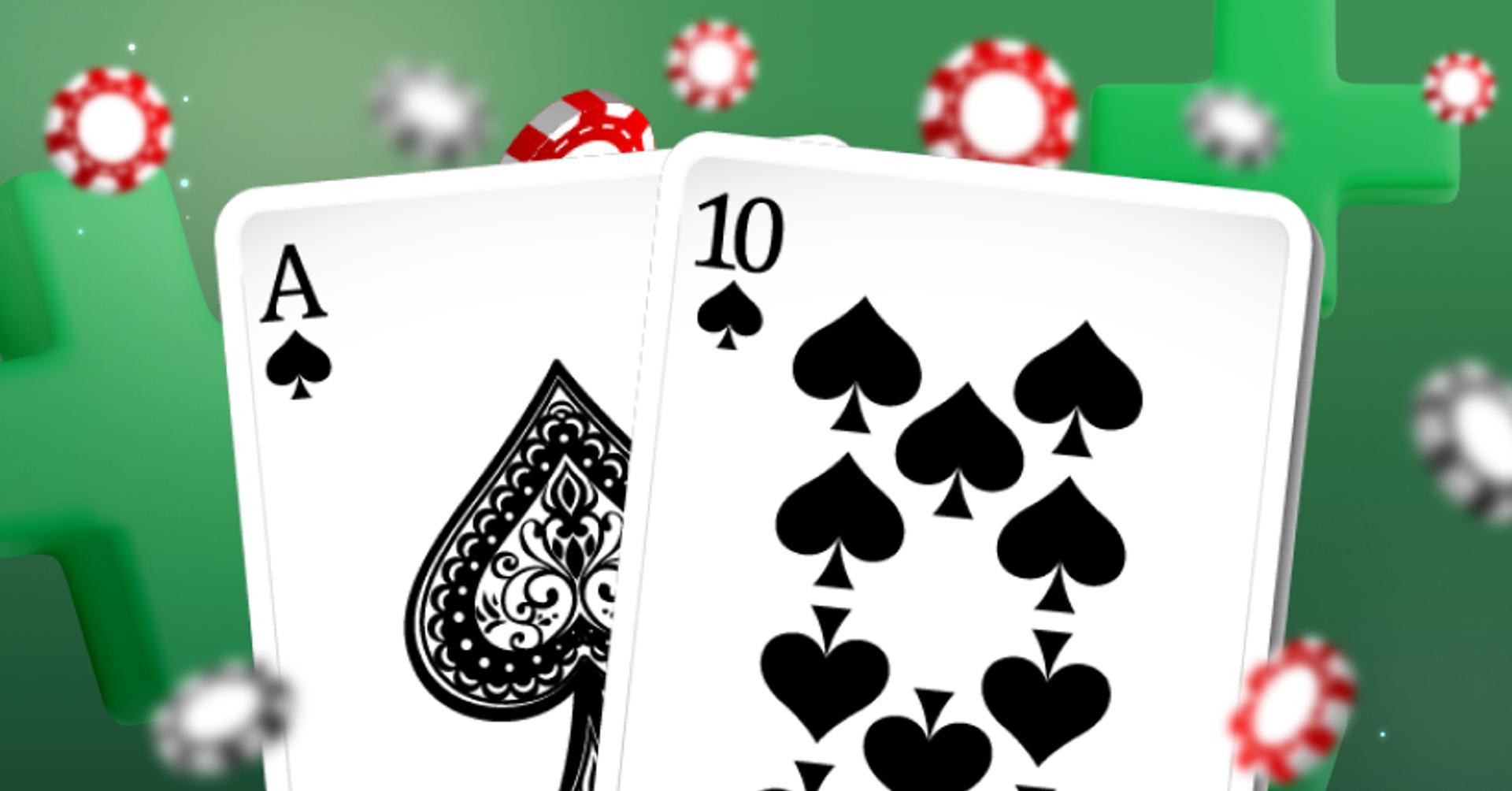Master Blackjack Odds: House Edge Secrets Revealed 2025

Most casino games give the house a big advantage, but Blackjack is different. Players who understand the numbers can reduce the edge to one of the lowest in gambling.
Unlike slots or Roulette, every decision at the table matters. Hit, stand, or double down at the right time, and you tilt the odds in your favor.
The key is knowing how Blackjack odds work and how small rule changes affect them. Here, you’ll see exactly how those rules work in practice, with clear examples you can use the next time you play Blackjack on Jackpot.bet.
What Does House Edge Mean in Blackjack?
A house edge in Blackjack is the long-term advantage the casino holds over players. Instead of looking at one hand in isolation, the math looks at the results over many hands played.
For example, with a house edge of 0.5%, the casino expects to keep around 50 cents for every $100 wagered. Such a small percentage doesn’t feel like much in a single session, but over time, it steadily works in the casino’s favor.
Blackjack Rules That Affect the House Edge
The house edge in this game shifts depending on the table rules, and even small tweaks can change the outcome more than most beginners expect.
The most important rules to check are payouts, how the dealer plays soft 17, and whether options like doubling and surrender are available. We will break them down next.
Blackjack Payout Odds: 3:2 vs. 6:5
The payout on a natural Blackjack is the clearest sign of how good or bad a table really is. At a traditional 3:2 table, a $10 hand pays $15 when you’re dealt an Ace and a 10-value card.
However, switch to a 6:5 table, and the same hand pays only $12. At first glance, that $3 gap may not feel like much, but when you add up dozens or hundreds of blackjacks, the loss becomes obvious.
In fact, the rule alone increases the house edge by about 1.39%. It is enough to turn a decent game into one of the least favorable versions available.
Dealer Rules on Soft 17: Hit vs. Stand
Once you’ve checked the payout, the next rule to look at is how the dealer plays a soft 17; a hand like Ace-6. If the dealer stands, players get a slight boost because the dealer has fewer chances to improve their hand.
If the dealer hits, the casino gains a small but steady edge of around 0.22%. On its own, it won’t ruin the game, but combined with other unfavorable rules, it gradually chips away at your results.
Other Rules: Doubling, Surrender, and Deck Count
After payouts and dealer rules, the smaller details still matter. For instance, being able to double down after splitting pairs (known as DAS) is a player-friendly option. Losing it adds about 0.12% to the house edge.
Similarly, the surrender rule is another subtle but useful feature. Without it, the edge rises by about 0.08%.
Finally, the number of decks in play also plays a role. More decks usually benefit the casino, while single- and double-deck games can be friendlier to players if the rest of the rules are fair.
Together, these adjustments might seem minor. But when stacked on top of each other, they can make the difference between a good Blackjack table and one that’s draining your bankroll.
Blackjack Rule Impact Table
|
Rule Change |
Effect on House Edge |
|
6:5 payout instead of 3:2 |
+1.39% |
|
Dealer hits on soft 17 |
+0.22% |
|
No double after split |
+0.12% |
|
No surrender option |
+0.08% |
|
More decks used |
Slight increase |
How to Spot Good Blackjack Odds at a Casino Table
Once you understand how rules change the house edge, the next step is learning to spot a good table quickly. The difference is often right in front of you on the felt or displayed on the screen if you’re playing online.
A good table pays 3:2 on Blackjack, has the dealer stand on soft 17, allows doubling after splits, and offers surrender. With these rules combined, the house edge can drop close to 0.5% or lower.
By contrast, a bad table pays only 6:5, has the dealer hit soft 17, and removes options like DAS and surrender. Such changes can push the edge over 2%, which makes a big difference over time.
On Jackpot.bet, we can review the rules inside each game’s info panel. So, it’s easy to confirm payouts, dealer actions, and options like surrender before we start playing.
Quick Checklist for Beginners
Before you play, check the following key rules:
-
Look for 3:2 payouts; avoid 6:5 tables.
-
Check if the dealer stands on soft 17.
-
Make sure doubling after a split is allowed.
-
See if surrender is offered.
-
Favor single or double-deck games when the other rules are fair.
Using Basic Strategy to Lower the Blackjack House Edge
Even if you pick the best table, the house edge only stays low if you play your hands correctly. That’s where basic strategy comes into play.
Basic strategy in Blackjack is a set of rules that tells you the mathematically correct move for every possible hand. It’s built on computer simulations of millions of Blackjack rounds, and it covers when to hit, stand, double, or split.
Instead of guessing or following hunches, you make decisions that give you the best return in the long run.
How Basic Strategy Changes Your Odds
You can reduce the house edge to around 0.5% on most fair tables by following the basic strategy. Without it, the edge can jump above 2% due to simple mistakes, such as standing when you should hit or taking insurance when you shouldn’t.
The difference might not show in a single session, but it builds up over weeks or months. For beginners, learning and practicing basic strategy is the most effective way to keep Blackjack one of the fairest games in the casino.
On Jackpot.bet, our Original game, Blackjack, is a great place to apply this. It uses classic player-friendly rules, making the math behind the strategy easy to see in action.
Online Blackjack vs Live Casino Blackjack Odds
It is beneficial to understand how online Blackjack differs from live casino tables. The differences might affect your strategy, odds, and overall experience:
Transparency and Table Information
When you compare online Blackjack to live casino play, the first difference you might notice is transparency. For example, online games, including those on Jackpot.bet, display their rules and payouts clearly in the info panel.
In a live casino, you have to scan the felt or look for signs at the table. It makes it easier to miss small but important details.
Deck Count and Shuffling
Deck count is another factor that separates the two formats. Both online and live Blackjack often use multiple decks, but online software can reshuffle instantly, removing any chance of tracking or counting cards.
Since more decks generally increase the house edge, you need to balance that by choosing games with player-friendly rules such as 3:2 payouts and dealers standing on soft 17.
Promotions and Bonuses
Finally, promotions add another layer to the experience. They don’t change the house edge directly, but they can soften its impact if used wisely. Fair bonuses give extra playtime, while poorly structured ones can cost more than they provide.
Bankroll Management Tips for Blackjack Beginners
Even with the best rules and strategy, Blackjack is still a game of chance. Due to this, bankroll management matters.
A simple approach is to set a budget you can afford to lose and bet no more than 1-2% of it per hand. Such a strategy keeps you in the game longer and limits the impact of losing streaks.
In addition, the odds on winning blackjack are about 42-44%, while losses happen around 48-49%, with the rest ending in a push. The small difference creates the house edge.
Since results fluctuate in the short term, smaller bets give us more opportunities and more chances to recover. Luckily, Jackpot.bet offers low-stakes tables, making it easy to practice and manage variance without draining a bankroll too quickly.
Common Myths About Blackjack Odds Debunked
Blackjack has a lot of myths that trip up newbies. For instance, a “Hot” or “Cold” table doesn’t exist, so every hand is independent.
Similarly, insurance is a side bet that usually costs more than it pays. And dealer “Streaks” are just variance.
Once you get past those myths, you can focus on the rules, strategy, and smart bankroll play that actually matter.
Pro Tip: Odds aren’t always what they seem in other casino games, either. Take a look at our guide on Roulette Odds Explained: Why Red/Black Isn’t 50/50? to see how small details shift the math just like they do in Blackjack.
Blackjack Glossary for Beginners
Blackjack comes with its own set of terms, and knowing them makes it easier to follow the rules and strategy. Here are a few basics every beginner should understand:
-
House edge: The built-in advantage the casino has, shown as a percentage.
-
RTP (Return to Player): The share of wagers paid back to players over time.
-
Soft total: A hand with an Ace counted as 11 (e.g., Ace-6).
-
Hard total: A hand with no Ace, or where the Ace must count as 1.
-
Push: When our hand ties the dealer’s, and you get your bet back.
-
Penetration: How far into the deck the dealer goes before reshuffling.
Responsible Gambling in Blackjack
Blackjack is meant to be fun, but it’s important to stay in control. The best way to do this is by setting time and money limits before you play and sticking to them.
Taking regular breaks and walking away when you reach your limit keeps the game enjoyable. If gambling ever stops feeling like entertainment, support is available.
On Jackpot.bet, we provide responsible gambling resources and direct links to organizations like GamCare and BeGambleAware. Thanks to this, players always have somewhere to turn for help.
Conclusion
Understanding Blackjack odds is what separates casual guessing from informed play. You’ve seen how rules, strategy, and bankroll management all shape the house edge.
While you can’t remove the edge completely, you can choose tables with fairer rules and avoid costly side bets to keep Blackjack one of the most player-friendly games.
By paying attention to the details, you can make smarter decisions and get more value from every session.
Frequently Asked Questions
What are the odds of winning at Blackjack?
The odds of winning Blackjack are around 42-44% per hand. Players lose about 48-49% of hands, and the rest end in a push.
Is Blackjack a 50/50 chance?
No. Blackjack is close to even, but not 50/50. The casino holds a small advantage called the house edge, usually under 1% with basic strategy.
Are Blackjack odds 2 1 or 3 2?
Blackjack odds for a natural are best at 3:2, meaning a $10 bet pays $15. Some tables pay 6:5 instead, which lowers payouts and raises the house edge.
Is blackjack your best odds?
When played with basic strategy, Blackjack offers some of the best odds in the casino, with a house edge often below 1%.









